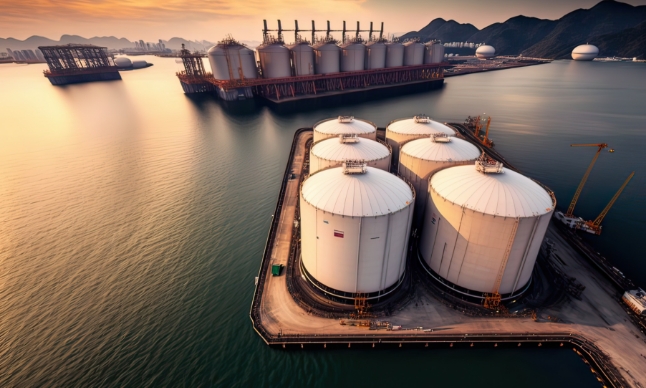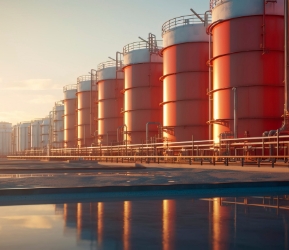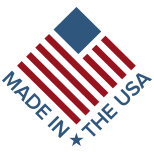Call Us: 1.800.275.3453
Request a QuoteCall Us: 1.800.275.3453
Request a QuoteIn the industrial sector, managing unforeseen spills efficiently is crucial to ensure both environmental and workplace safety. Secondary spill containment is a proactive measure designed to prevent hazardous materials from escaping into the surrounding environment. Polystar Containment has provided robust secondary containment solutions for more than 20 years. This guide aims to shed light on the importance of secondary spill containment, will provide secondary containment examples and demonstrate how Polystar can ensure a safer and compliant operational framework for your enterprise.

In this Article:
Secondary spill containment is a critical aspect of industrial safety and environmental protection. It acts as a line of defense against unintended releases of hazardous materials, ensuring that they are captured and contained promptly.
Secondary spill containment refers to the strategies and systems in place to capture hazardous substances in the event of a spill, preventing them from contaminating the surrounding environment.
Spill containment vs. secondary spill containment – which do you need? Understanding the distinction between the two is crucial for the proper handling of hazardous materials.
Spill Containment primarily refers to the initial measures and systems put in place to contain hazardous materials within designated areas. This could include mechanisms like sealed containers, storage tanks or other containment vessels that hold hazardous materials securely under normal conditions. The primary objective of spill containment is to prevent hazardous materials from escaping their designated containment systems.
Secondary Spill Containment acts as an additional layer of protection, designed to contain hazardous materials in the event the primary containment systems fail. Examples of secondary spill containment solutions include berms, dikes and containment pallets that capture and hold spills, preventing them from contaminating the surrounding environment. Secondary spill containment products aim to mitigate the impact and prevent further damage in case the primary containment measures fail.
Both are integral parts of a comprehensive spill prevention and response strategy, ensuring a safer and compliant operational environment.
The use of proper secondary spill containment products:
By adhering to these secondary containment requirements, facilities can significantly reduce the risk of environmental contamination, ensure a safe and compliant operational environment and avoid costly fines.
The Spill Prevention, Control and Countermeasure (SPCC) secondary containment requirements are a set of guidelines established by the U.S. Environmental Protection Agency (EPA) to prevent the discharge of oil and other hazardous substances into navigable waters or adjoining shorelines.

These regulations require certain facilities to develop and implement SPCC Plans which detail the measures taken to prevent spills, control a spill should one occur and establish procedures to clean up and mitigate the effects of a spill.
SPCC regulations provide a framework to prevent and manage spills of oil and hazardous substances.
Key elements of the secondary containment requirements include:
Adherence to SPCC regulations is crucial as it not only ensures legal compliance but also helps in maintaining a facility’s operational integrity by minimizing disruptions caused by spill incidents.
In addition to SPCC, international standards like ISO 14001 emphasize the importance of environmental management systems, which include effective spill response mechanisms and secondary containment systems. ISO 14001 encourages organizations to have a plan in place for managing environmental emergencies, including spills.
Polystar offers a broad spectrum of secondary spill containment products to cater to various industry needs. These secondary containment examples are just a sampling of what we offer:
Polystar excels in creating custom secondary containment solutions tailored to meet the distinctive needs of a broad range of industries. Whether it’s addressing specific regulatory compliance, accommodating unique site conditions or handling diverse types of hazardous materials, our custom secondary spill containment products are engineered with precision to ensure optimal performance. By closely collaborating with clients to understand their unique requirements, we deliver unique containment solutions that ensure a safer and compliant operational environment.
With more than 20 years in the industry, Polystar Containment has extensive experience in the field of spill prevention and containment. Our move to Stow, Ohio in the summer of 2013 marked a pivotal phase in the company’s growth which allowed us to double our production and manufacturing space so we can engineer larger and stronger components for heavy duty use. We also have dedicated departments for welding and fiberglass production.
We take pride in being a US-based original equipment manufacturer of secondary spill containment products. Every product offered is engineered and manufactured in-house at our own facility. By controlling the entire manufacturing process, Polystar stands as a reliable, domestic source for robust secondary containment solutions.
The core of Polystar’s success lies in its innovative use of composite plastic materials in manufacturing spill containment products. By employing fiberglass reinforced plastics, Polystar has revolutionized the secondary spill containment industry. These innovative materials significantly enhance corrosion resistance, strength and product longevity when compared to alternatives.
The innovative use of these modern materials has set a new industry standard, allowing for the engineering of larger and stronger components adept for heavy-duty use while ensuring environmental safety and compliance. Through continuous material innovation, Polystar delivers superior secondary containment solutions that meet the evolving needs of modern industries.
Learn more as we answer some common questions about secondary spill containment.
Polystar crafts custom solutions by utilizing its in-house welding, fabrication and wood shops to create unique molds and models for fiberglass and composite products. This integrated approach accelerates the production process, eliminating extra costs and ensuring timely delivery of custom secondary spill containment solutions tailored to meet your specific needs.
Polystar offers a range of secondary spill containment solutions engineered to help companies comply with Occupational Safety and Health Administration (OSHA) requirements. By providing custom-designed containment systems, Polystar ensures that your facility has the necessary measures in place to manage spills effectively and maintain a safe working environment. Another Polystar advantage is that we assist you through every phase of your containment project, ensuring the final setup complies with SPCC regulations and OSHA secondary spill containment requirements.
We primarily use composite plastic materials, particularly fiberglass reinforced plastics, in manufacturing many of our spill and secondary spill containment products. These materials offer a myriad of advantages including reduced fatigue, minimal thermal expansion and transfer, superior corrosion resistance and enhanced strength and longevity.
Polystar’s secondary containment systems stand out due to their customizability, durability and innovation. The use of fiberglass reinforced plastics significantly enhances the structural integrity and corrosion resistance of our products, ensuring they withstand the test of time even in harsh industrial environments. Our in-house engineering and manufacturing allow for tailored secondary spill containment solutions that meet your unique needs, ensuring optimal performance and compliance with environmental regulations.
Request a quote to get started!